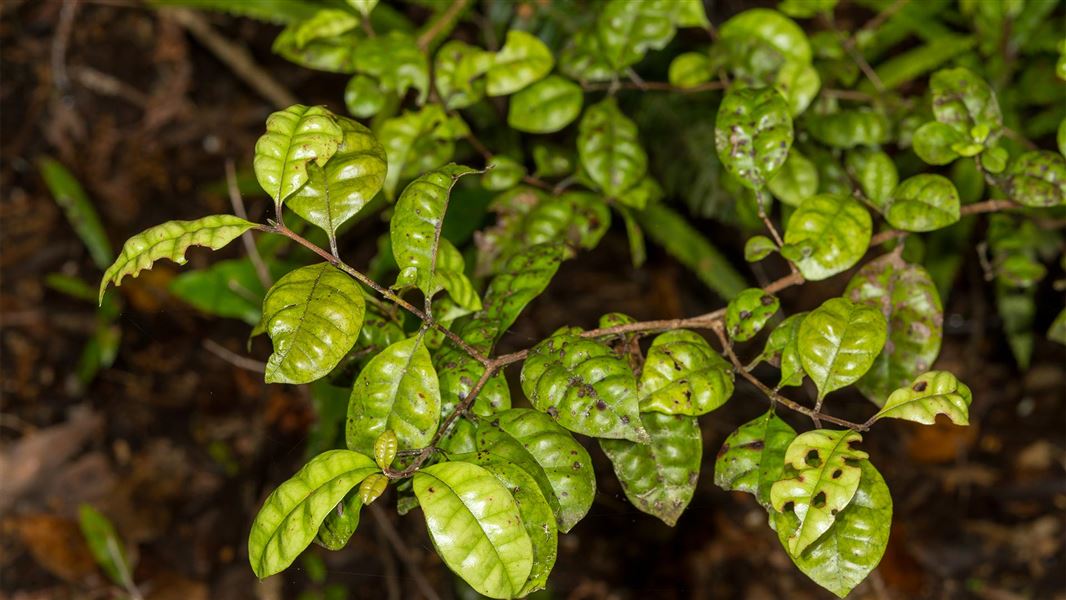Date: 01 October 2024
An independent panel of experts, led by Professor Peter de Lange (Unitec Institute of Technology), has assessed the conservation status of 2844 vascular plants native to Aotearoa New Zealand. While the status of 110 has improved since the last assessment in 2017, the status of 161 plants has worsened.
Vascular plants have woody tissue that conducts water and nutrients around them, and includes trees, shrubs, herbs, grasses and ferns. Mosses, liverworts, hornworts and algae don’t have woody tissue and are assessed separately.
In response to the report, Department of Conservation Technical Advisor Ecology Andrew Townsend says it shows that where threats are managed, declines of native plants can be halted and population recovery is possible.
“This report is evidence that a range of activities including pest animal management, weed control, fencing, and collection and storage of seeds and propagation at botanic gardens and nurseries, are among the most effective tools we have for protecting taonga plant species.”
Castle Hill forget-me-nots have improved their threat status (moving from ‘Nationally Critical’ to ‘Nationally Endangered’), benefitting from weed removal and the discovery of new populations, although pigs and drought remain a problem.
Koheriki (Scandia rosifolia) in the northern part of its range has seen an improvement from ‘Nationally Critical’ to ‘Nationally Vulnerable’ through effective possum and ungulate control, and the discovery of new populations on Te Hauturu-o-Toi/Little Barrier and Aotea/Great Barrier islands
However, the report shows many species are in decline.
“The assessment underlines what we’re seeing around the country. Native plants are under increasing pressure from deer, pigs, goats and other ungulates as well as wallabies, possums, hares and rabbits. Exotic plants are also spreading in the wild and can outcompete native plants for habitat,” Andrew says.
Well-known culprits such as wilding pines and exotic grasses pose an enormous threat, effectively smothering native plants in their habitats.
Veldt grass is responsible for the loss of some North Island forget-me-not populations and is putting a coastal mahoe species under pressure. Chewings fescue is a significant problem in eastern dryland limestone ecosystems, the habitat of some of our most threatened plants.
The panel also introduced climate change as a risk factor for the first time.
Climate change affects many plants only found on the coast, Holloway’s crystal wort, confined to Far North beaches, is one of number coastal species threatened by increasing storms and sea surges.
Subalpine mountain daisies are amongst the subalpine and alpine plants affected by climate change. As the climate warms, drought is an increasing problem, and weeds are invading the daisies’ habitats. Because the daisies are near the tops of mountains, they have little room to spread.
The report confirms the impacts of myrtle rust, with some myrtle species showing serious decline and ramarama facing possible regional extinction in parts of the country. Other myrtle species don’t appear as heavily impacted, but this could change.
Latest report on conservation status of vascular plants in Aotearoa New Zealand.
Background information
The Conservation status of vascular plants in Aotearoa New Zealand is the latest report under the New Zealand Threat Classification System (NZTCS). The NZTCS is an independent assessment tool led by the New Zealand scientific community and administered by DOC. The assessments are carried out by an independent panel of experts.
Contact
For media enquiries contact:
Email: media@doc.govt.nz
